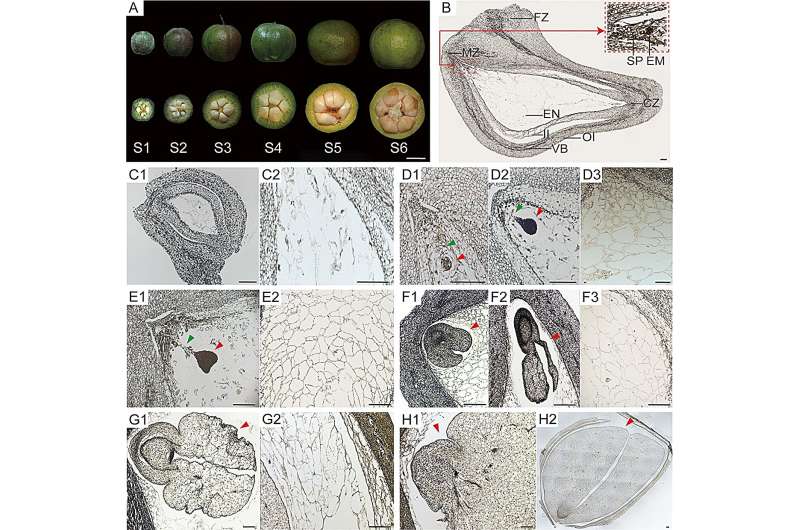This article has been reviewed according to Science X's editorial process and policies. Editors have highlighted the following attributes while ensuring the content's credibility:
fact-checked
peer-reviewed publication
proofread
Flow of sweetness: Key sugar transporters identified for enhanced camellia seed growth

Seed development is crucial for plant reproduction and crop yield, largely dependent on efficient sugar transport and metabolism. In many plants, the detailed mechanisms of sugar import remain unclear, despite extensive research on model species.
Camellia oleifera, a major oil-producing plant, suffers from severe seed abortion and low yield, highlighting the need for deeper insights into its seed development process. Due to these challenges, further research is essential to understand and improve sugar transport mechanisms, aiming to enhance seed yield and quality in this important agricultural crop.
Researchers from Beijing Forestry University have made strides in understanding sugar transport in Camellia oleifera seeds, as published in the Horticulture Research journal on May 10, 2024. The study systematically examines the molecular mechanisms of sugar import, offering insights into seed development and yield enhancement strategies.
The study revealed a dual pathway for sugar transport in Camellia oleifera seeds: a symplasmic route within the seed coat and an apoplasmic pathway at the maternal-filial interface. Researchers identified key sugar transporters, including CoSWEET1b, CoSWEET15, and CoSUT2, which play crucial roles in facilitating sugar import into developing seeds.
Enzymatic activity assays and histological observations highlighted the importance of acid invertases in maintaining high hexose levels during early embryo development. The identified sugar transporters and sucrose-metabolizing enzymes work in coordination to ensure efficient sugar import and distribution, supporting proper seed development.
These findings provide a comprehensive understanding of the molecular mechanisms regulating sugar transport in Camellia oleifera seeds, offering potential targets for genetic manipulation to improve seed yield and quality in this vital oil-producing plant.
Dr. Lingyun Zhang, the lead researcher, stated, "Our findings provide the first comprehensive evidence of the molecular regulation of sugar import in Camellia oleifera seeds. This research not only advances our understanding of seed development but also opens new avenues for improving seed yield and quality through targeted manipulation of sugar transport pathways."
The study's insights into sugar transport mechanisms offer potential applications in agriculture, particularly in enhancing the yield and quality of Camellia oleifera seeds. By manipulating key sugar transporters and enzymes, it may be possible to develop strategies for improving nutrient supply and seed development, ultimately contributing to higher productivity in oil-producing plants.
More information: Bingshuai Du et al, Sugar import mediated by sugar transporters and cell wall invertases for seed development in Camellia oleifera, Horticulture Research (2024). DOI: 10.1093/hr/uhae133
Journal information: Horticulture Research
Provided by TranSpread




















